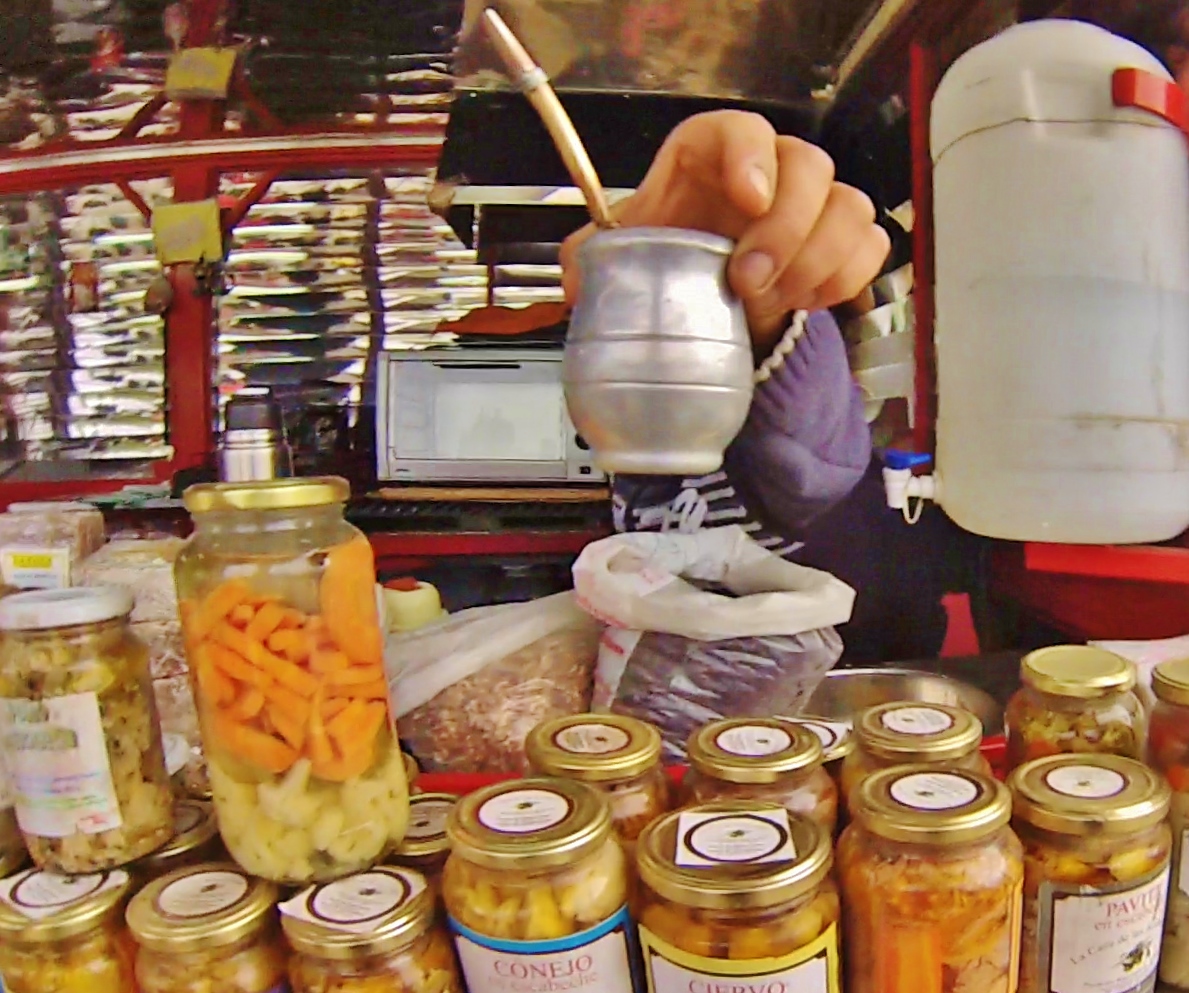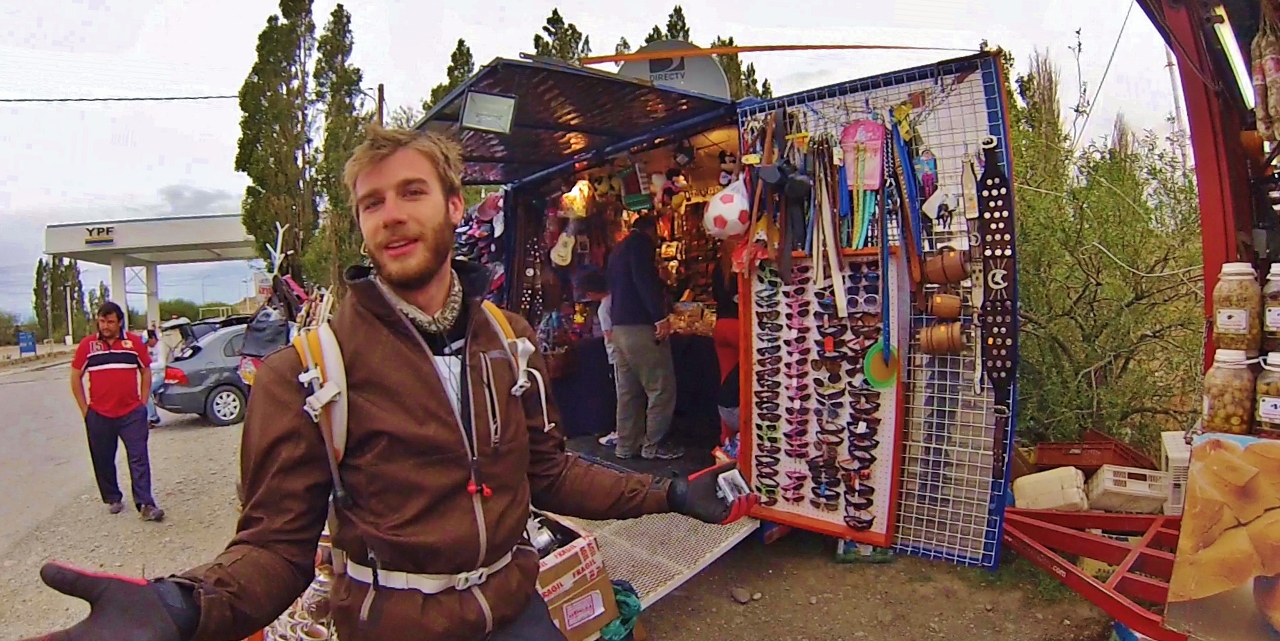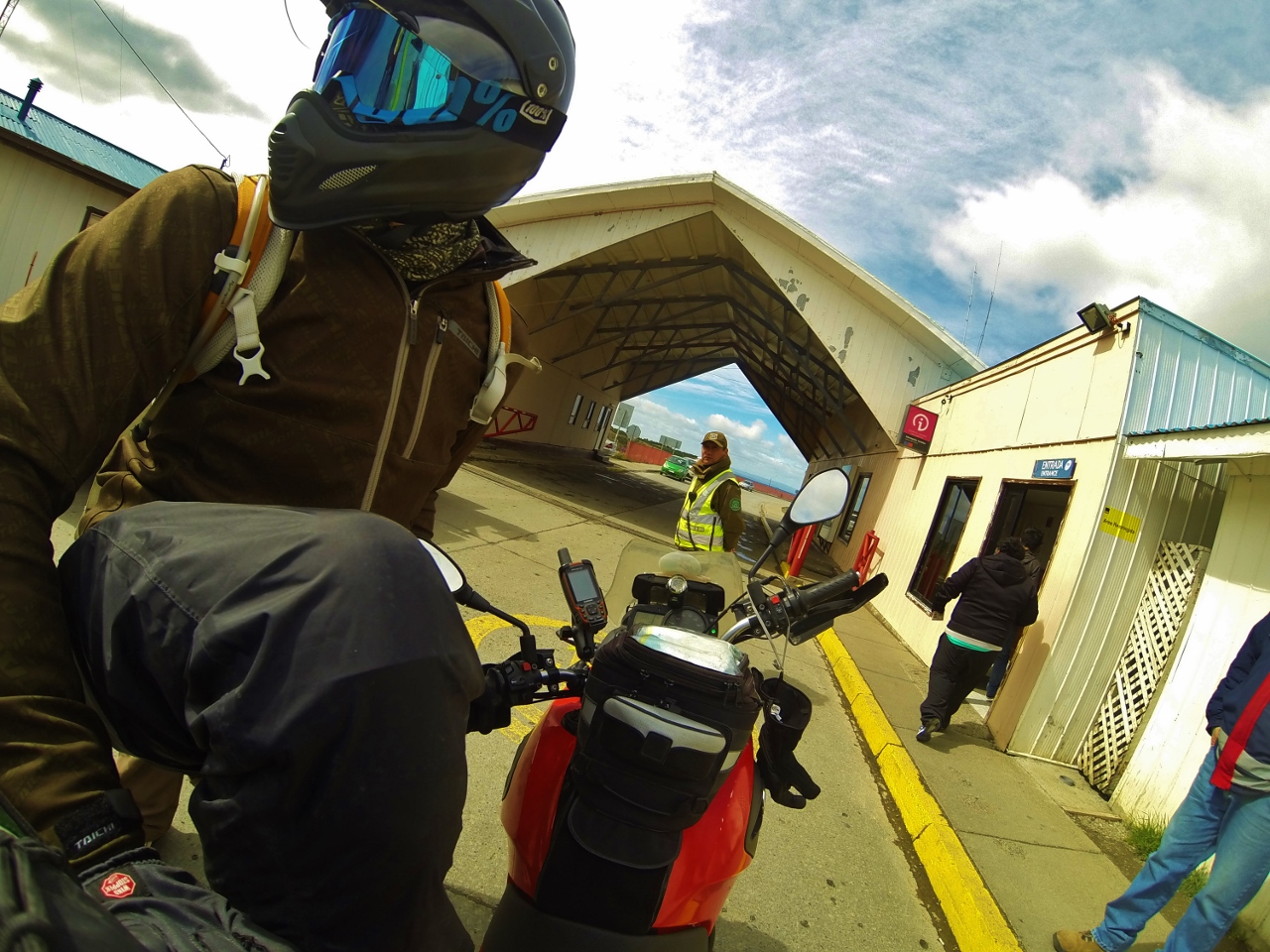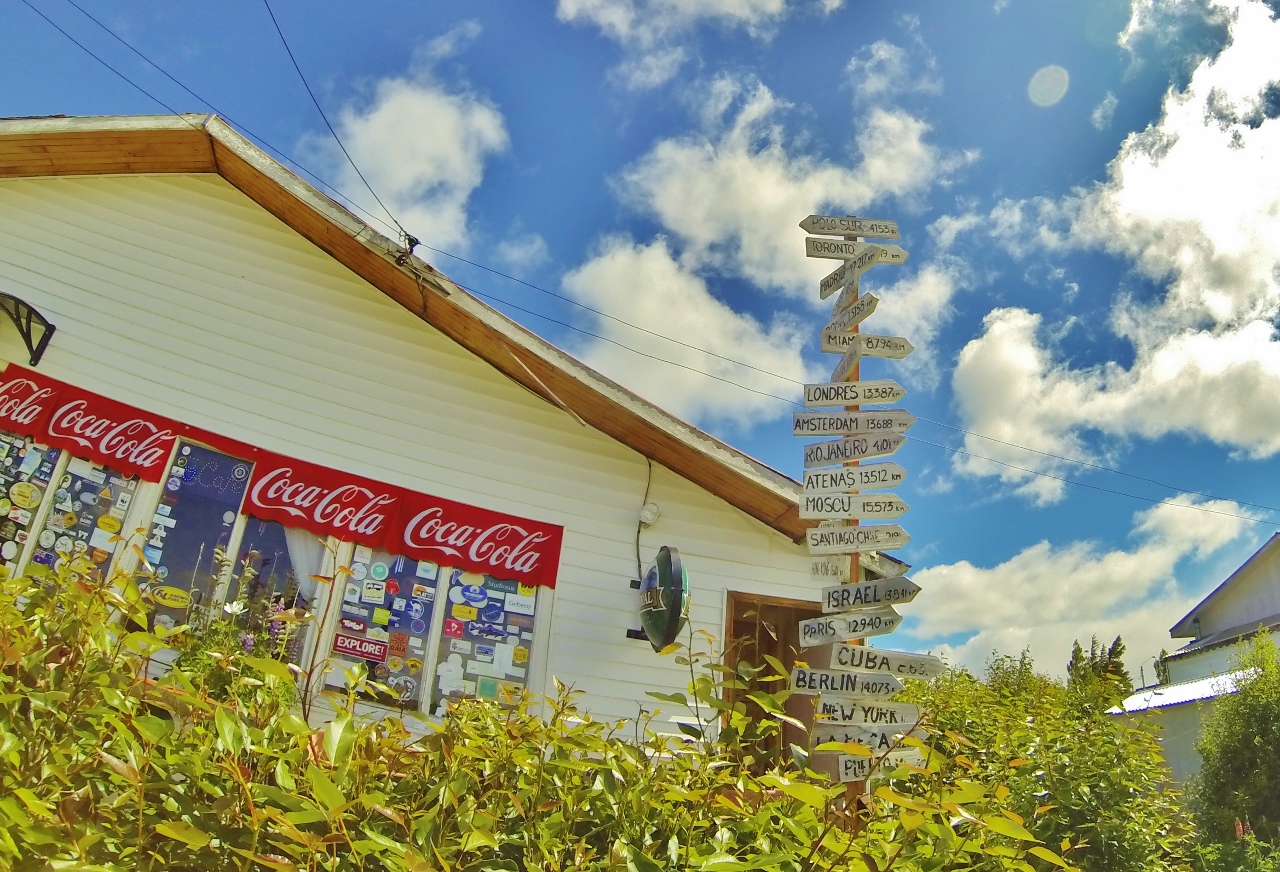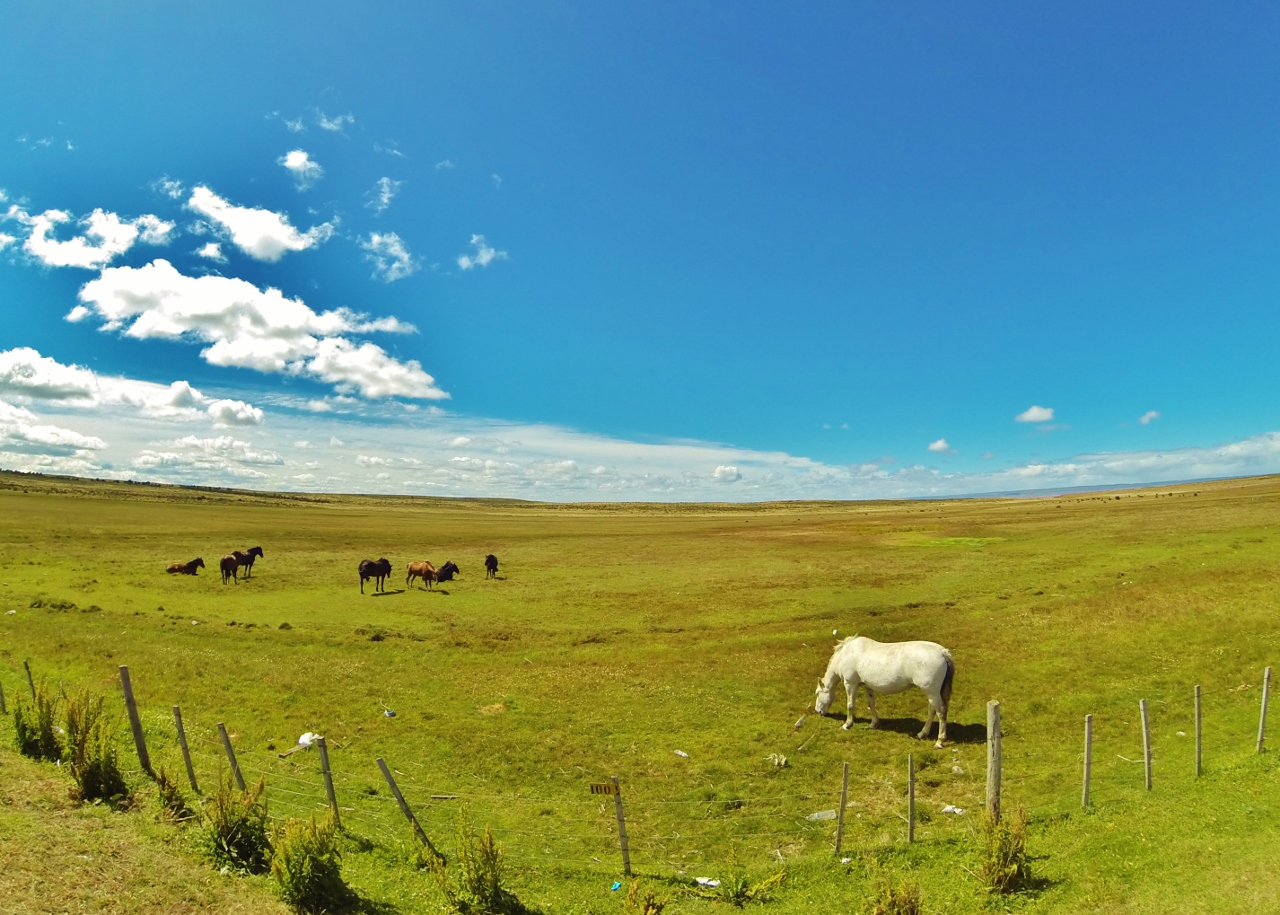I. Always trust an Argentine
One of the chief rules among adventure motorcyclists is "Never Ride At Night." Here I found myself not only riding at night, but riding at my bike's top speed. If a single guanaco or ñandú decided to venture into the road there would be nothing I could do to avoid it, but still I kept the throttle pinned. Out in the darkness on the windy pampa of Argentine Patagonia my dad was stranded without gas.
I topped a hill and, after about forty-five minutes since I last saw any sign of another vehicle going in either direction, I saw headlights coming my way. As I approached, they flashed their high-beams once, then again, then a third time. Puzzled as to what they were trying to tell me, I leaned up over my handlebars to check my own lights--both were working fine, so I wondered if there was something in the road ahead. We soon closed the distance between each other and suddenly the pair of lights ahead dove to the right, on to the shoulder of the road, and stopped. In any other situation I would have stopped to see if they needed help. After all, countless Argentines had stopped to check if I was alright almost every time I was pulled over by the road for a break, but the thought of my dad was unshakable. In that split-second, an arm-wrestling match between filial piety and karma occurred in my head.
Even though I knew they couldn't hear it, I apologized to the people in the truck as I passed them. Perhaps I would never have another stroke of good will again, but getting to my dad was more important. Suddenly I caught a faint-yet-familiar shape in the bed of the truck, and for the first time in fifty kilometers I put on my brakes. I turned again to make sure I wasn't mistaken, and sure enough there was my old man's bike. Several men climbed out of the truck and began waving at me, and as I turned my lights revealed one of the silhouettes to be my dad.
After a relieved embrace and a few jokes, he climbed back in to the truck and I followed them to town. Turns out his rescuers, like mine, were also construction workers on their way back to Gobernador Gregores. In town we found a place to settle down for the night, nursed our tired bodies (and my bruised ego) with cold cuts and beer, and soon passed out.
II. Dual-sport bikes go where they please
In the morning we climbed out of the small river valley that Gobernador Gregores sits in and emerged back again on the vast and windy pampa. Within an hour we were back at the end of the pavement and passing the site where we ran out of gas. Today I was carrying an extra couple of gallons using a plastic container given to me by the construction workers, determined not to make the same mistake twice.
Lago Cardiel, Santa Cruz, Argentina
The combination of loose gravel and punishing wind is not the kind of thing that gets easier as you continue, but our Brazilian friends from the day before had told us to keep our eyes out for pavement up ahead. For better or worse, the unpaved links between towns in Patagonia are quickly being covered, and we were told that the first layers of asphalt between Gobernador Gregores and Tres Lagos were being laid at the time. While all other vehicles are restricted to the gravel detours to the side of the construction, the Brazilians told us that bikes could easily sneak on to the freshly-laid pavement for some relief.
Sneaking on to fresh asphalt
We arrived in Tres Lagos and soon found ourselves among a gaggle of BMWs at the local gas station.
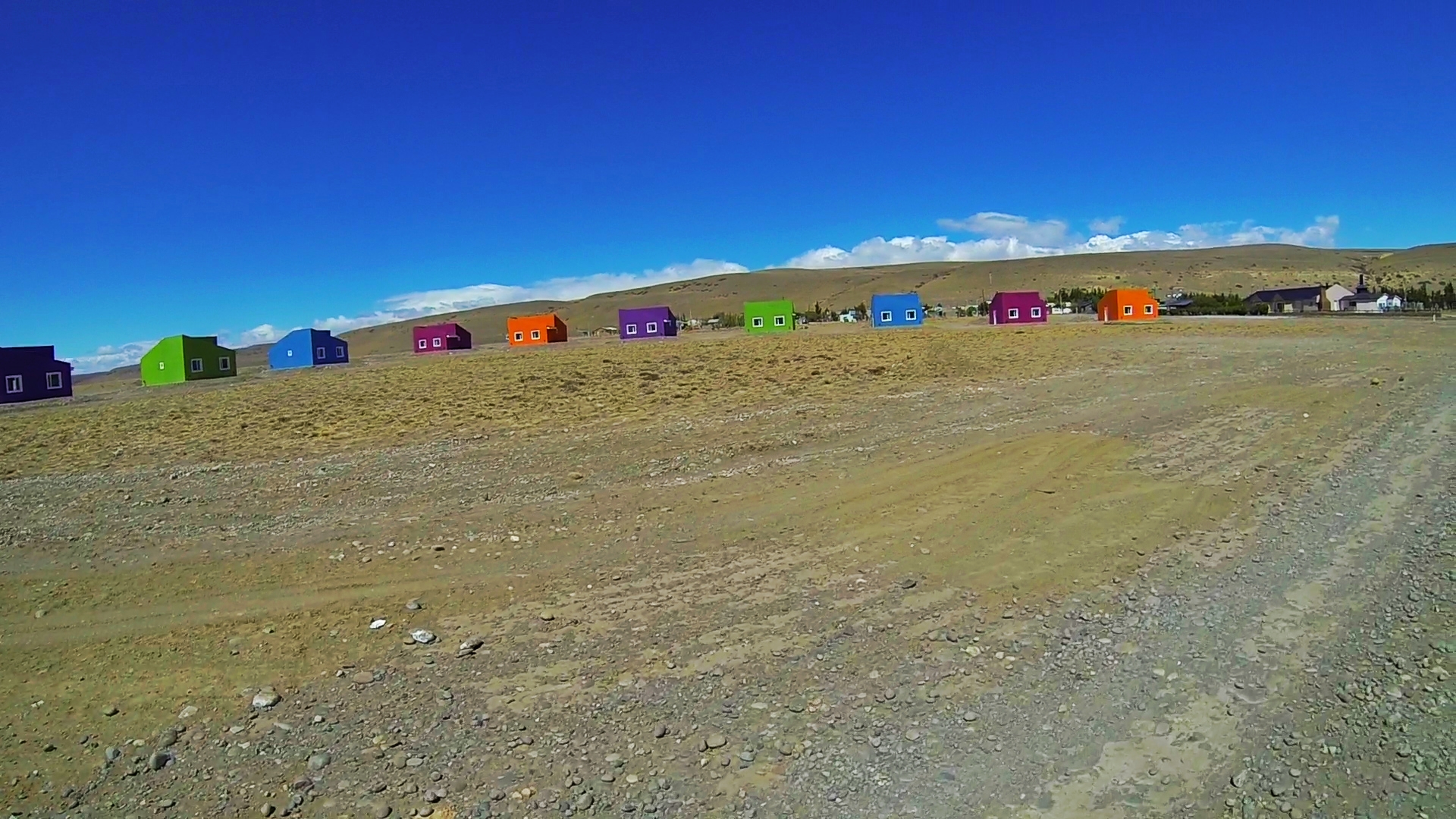
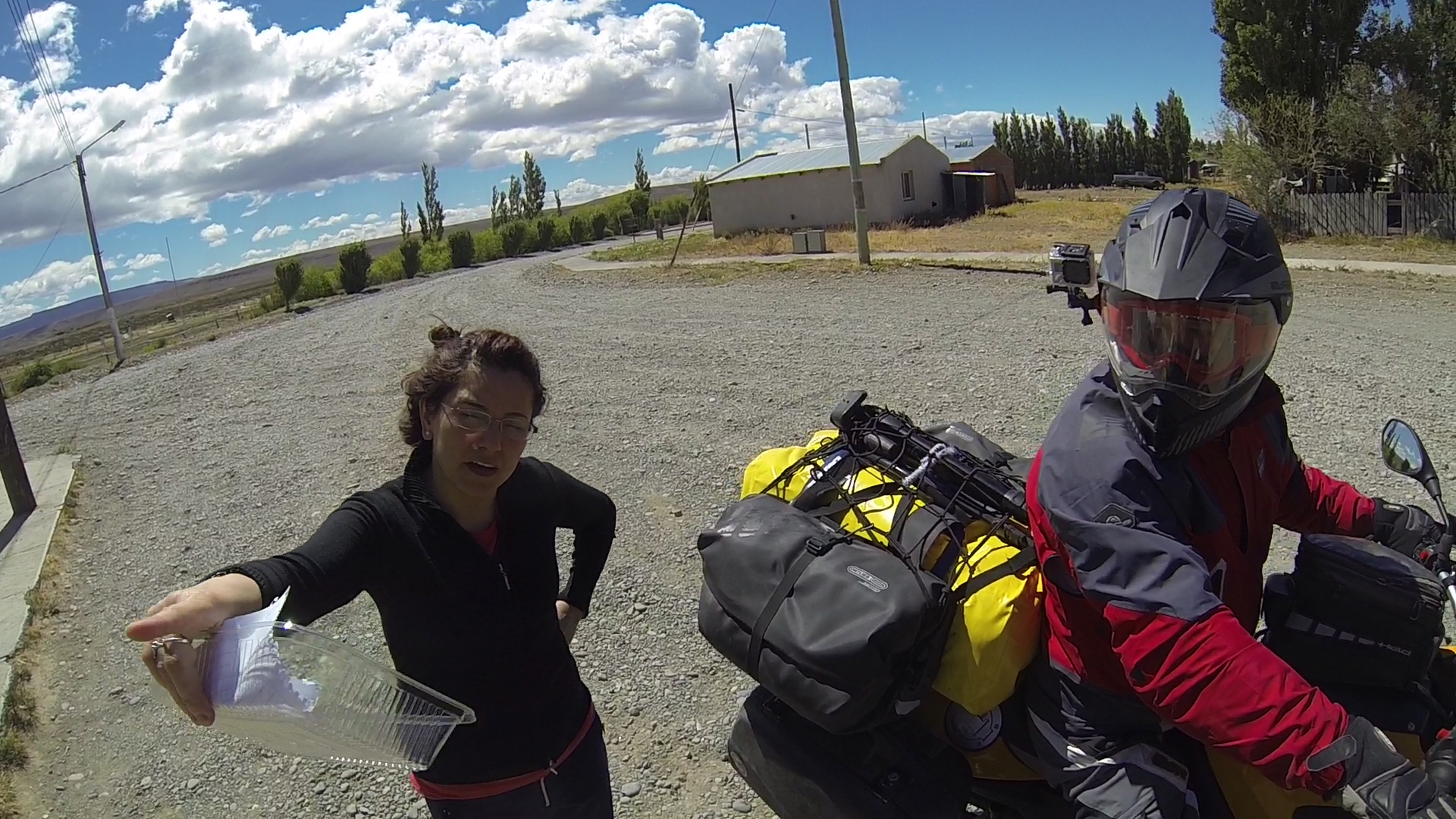
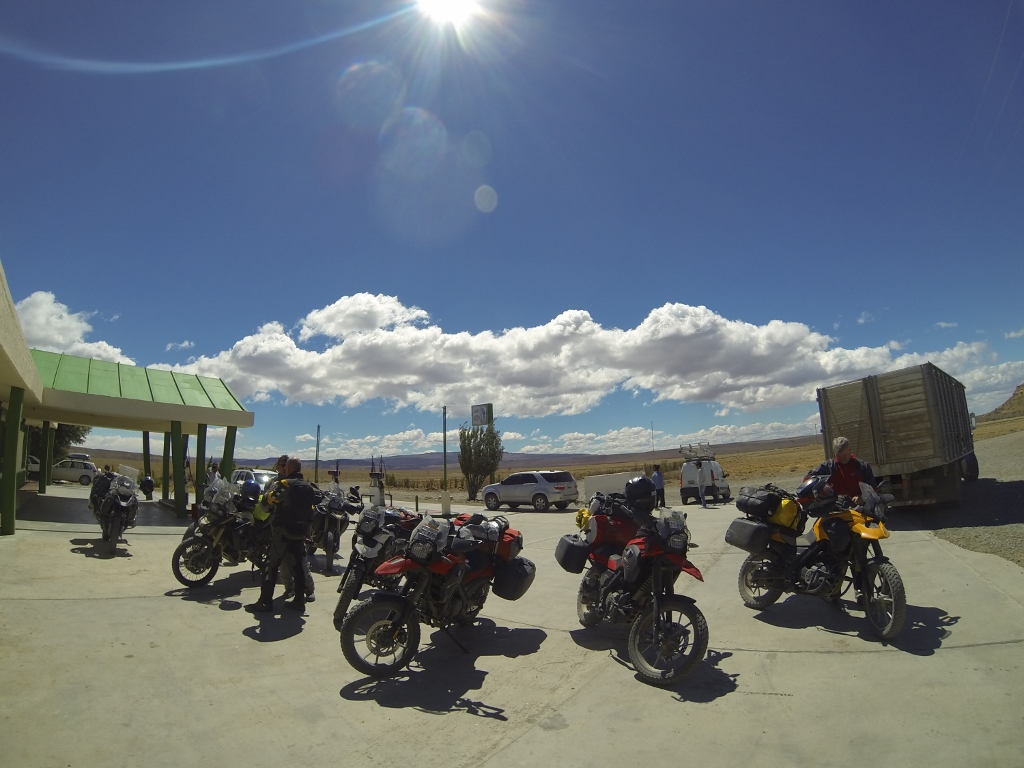
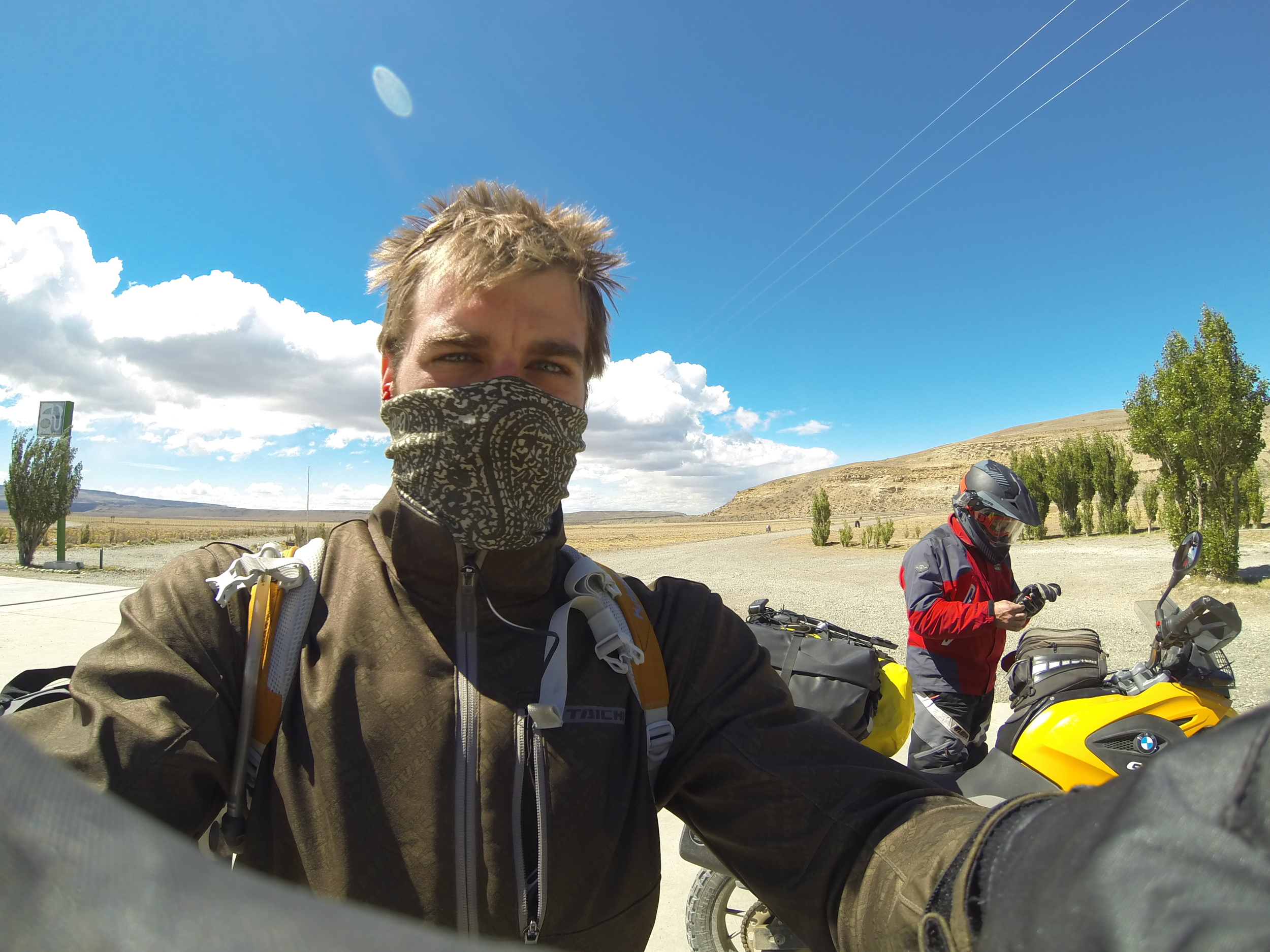
From Tres Lagos, normal pavement resumes south, around the shores of Lago Argentino and the city of El Calafate.
Lago Argentino. Homeless factor is approaching 8.0 at this point.
Panoramic of Lago Argentino
El Calfate, by far the most touristy town we had encountered since that freezing night in Bariloche, was the first town where we were not greeted with the same excitement as small town hostel staff or cabin owners. Snooty hotel concierges were quick to inform us that they had no room for a couple of worn out foreign motorcyclists. This was all fine by me, as I would much rather give my money to the kind of people who run a place like Hospedaje Flores del Sur. Not only was the staff incredibly friendly, they helped us plan our day trip to Parque Nacional Los Glaciares the next day. Due to the midadventures from the night before, that night we treated ourselves to a famous Argentine parrillada, which is a medley of cuts of grilled meats.
III. Perito Moreno
The next morning we set out west along the shores of Lago Argentino toward the Andes once again. The southern entrance of Parque Nacional Los Glaciares features a single road that winds along the lakeside until you reach the park's most famous resident: Glaciar Perito Moreno.
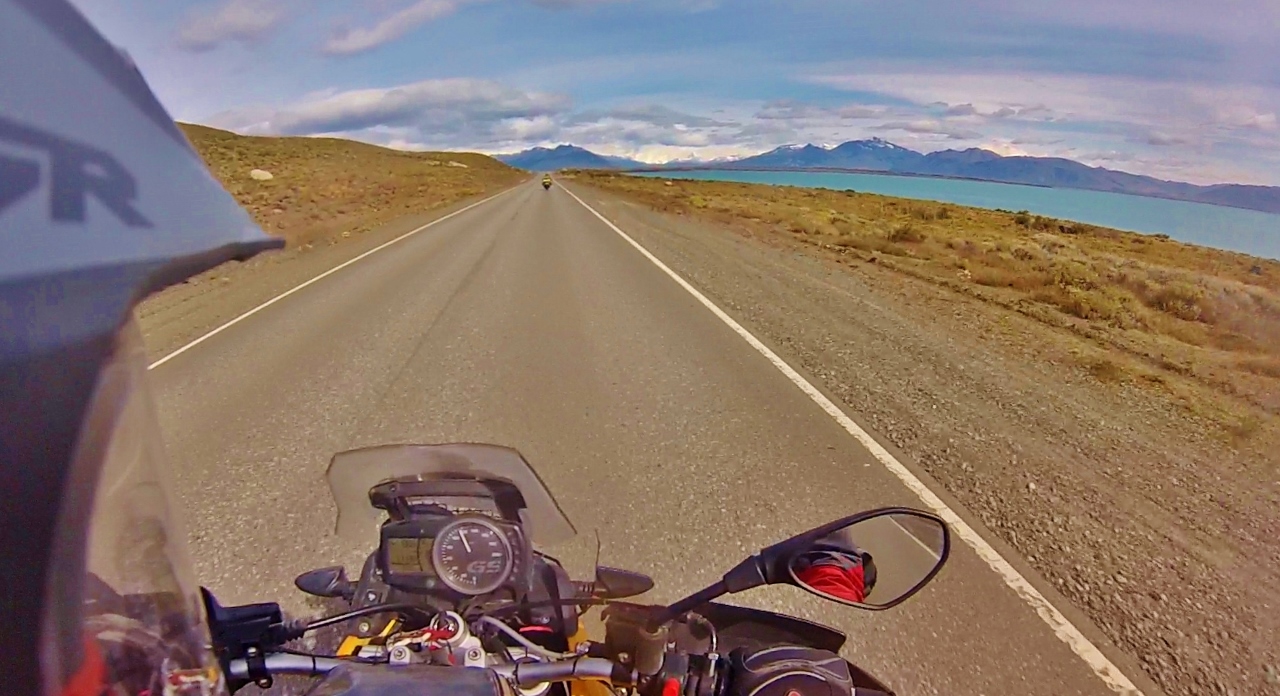
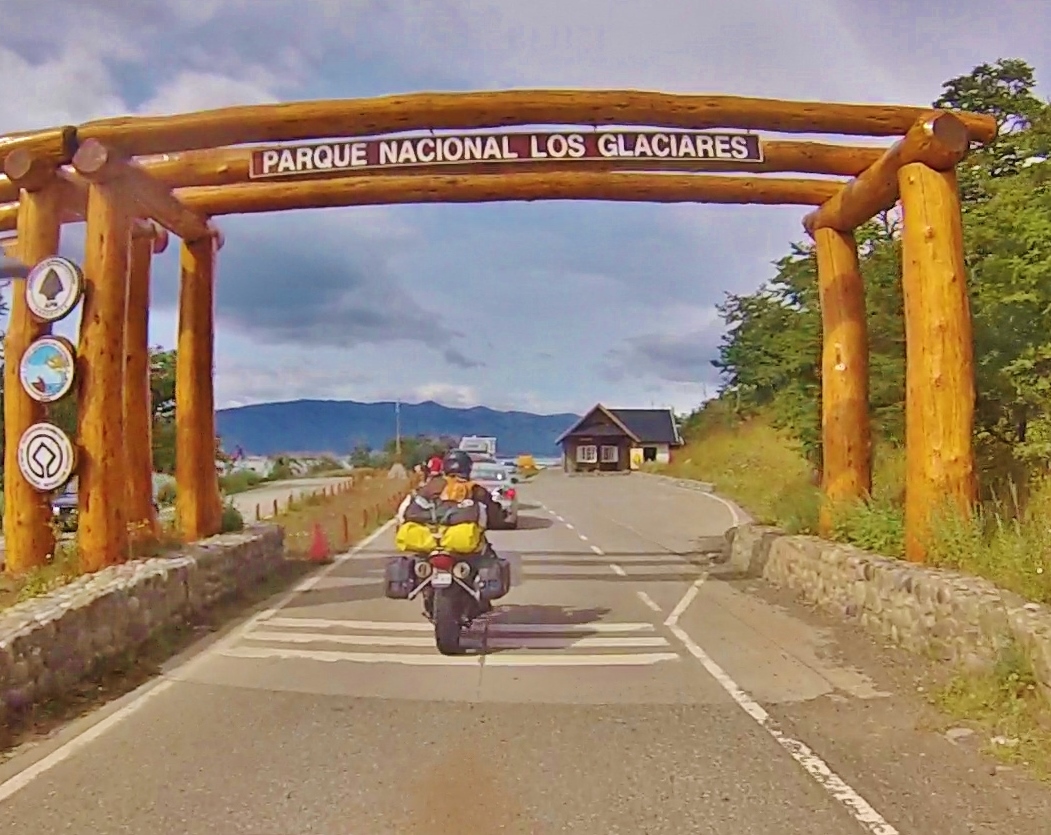
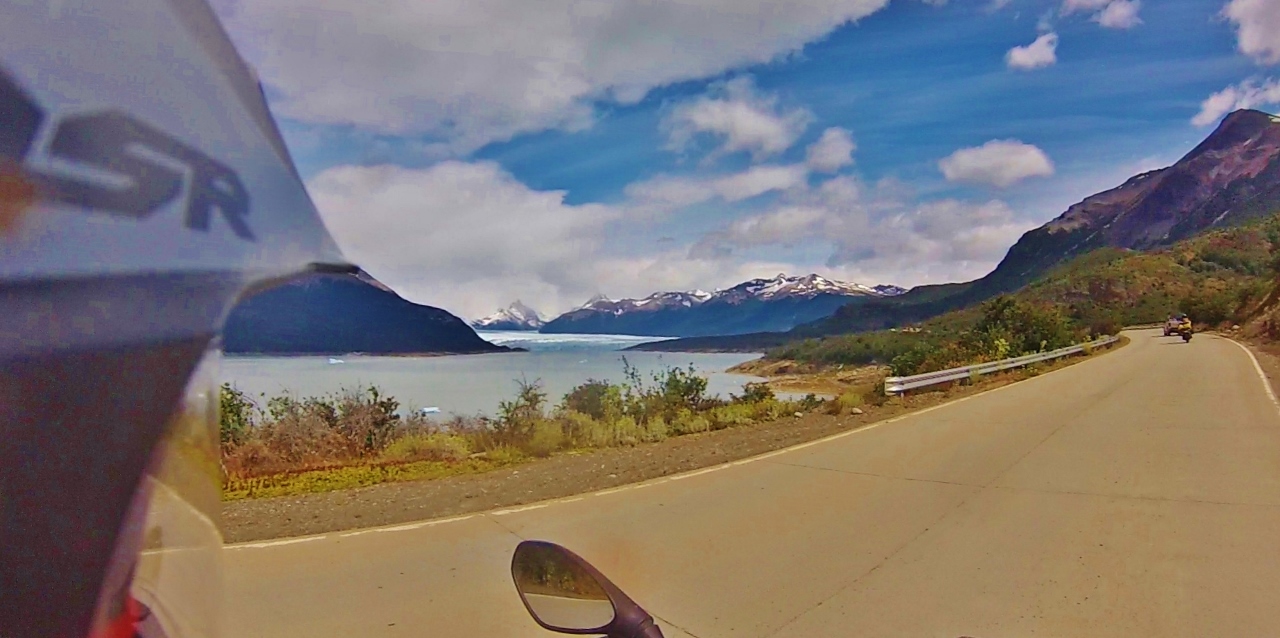
The glacier itself is beyond comprehension in person, let alone via picture or video. The monolith stands across a small channel of water that changes from dull grey to glowing turquoise as it flows from one side of the glacier to the other. Standing face to face with a wall of ice hundreds of feet high is nothing short of humbling, terrifying, and exhilarating, and you can not help but feel that this thing is somehow alive.
To get a sense of just how huge Perito Moreno is, here you can just barely see one of the tour boats (just to the left of the glacier face). Those boats are double-decker catamarans (click here for a picture)
Its continual advance, though impossible to appreciate with a human's eye and reference of time, is nevertheless detected in a way that can not be attributed to any individual sense. Every few minutes bits of ice, some as small as pebbles and others as large as cars, flake off the face of the glacier and plummet down to the water. Yet no matter how much ice breaks off in to the lake, the immensity of the glacier obscures the fact that it has diminished at all. The width of it can not be seen from the center; you only know where it ends by observing the mountains on both sides that form the glacier's channel toward the lake. Looking beyond, you can see the trail of the ice as it flows down from the mountains (after all, it is basically just a frozen river) until it disappears in a curtain of clouds and rock. Its origins lie in the Southern Patagonian Ice Field, a huge expanse of pure ice almost five-times the size of Long Island, suspended among the peaks of the southern Andes.
River of ice flowing from the ice field
The glacier is heard and felt, too. Moment by moment cracks and splinters form out in the field of advancing ice, and although their movements are unseen they nevertheless announce themselves like the boom of a cannon or the rumble of thunder. In our technology-driven society, the appreciation that many previous cultures had for nature is often compromised or overlooked entirely. Some people see humans as one organism among the billions of organisms that have evolved to live on the planet, while others choose to believe that everything on Earth, including humans, was created by some higher being. Despite the differences between these different views of man's role on Earth, it is an objective fact that we are part of nature, and therefore our actions affect the natural systems that we participate in (whether we realize it or not). It seems to me that no matter which belief a person holds, this fact should motivate anyone to cherish and conserve the resources of the planet and to seek a more harmonious and sustainable way of life. Once we reach that point, the only enemy is apathy.
Click to see the full-sized version
IV. The end of the world
We departed El Calafate with an unusual calmness. The encounter with the glacier had placed previous worries in a much different perspective, and now things like gas, wind, and distance all seemed trivial compared to the types of thoughts evoked by Perito Moreno.
By mid-afternoon the smooth pavement carried us to Esparanza, Argentina, where we made some unexpected friends and I made good on one of the Mantra of Miles "El Amigo Más Amigo" Sponsorship dares (coming in a later post).
We spent our last night on the road in Río Turbio, Argentina, just shy of the Chilean border. From there we rolled along the hills of Magallanes. We watched clouds pass overhead as the sheep, cattle, and horses watched us go by.
Once in Punta Arenas, my old man had to catch a cab to the airport right away, so we didn't have time for a proper "End of the World" photo together. After a surprisingly emotional goodbye for two white men, he was heading back to Texas. My journey, however, was just starting.
At the warehouse where we returned the rented bikes, I ran in to a couple who were picking up their KTM and heading north to start their trip. Holger and Yang (their past trips are on Holger's site: HHconsulting.asia) are experienced adventure riders and riding two-up through South America.
Holger and Yang, and the last known photo of Big Red :(
Yang gave me a recommendation for a hostel in town, so I said goodbye to Big Red and stuffed my motorcycle gear in to a cab. It was time to start looking for another bike.










